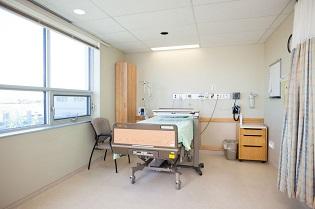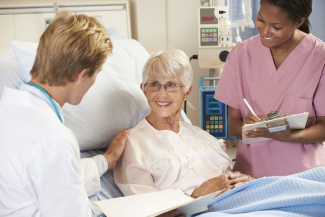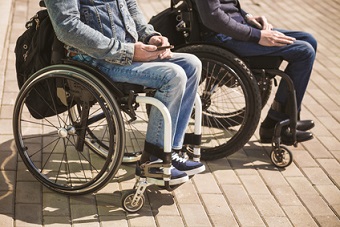The Right Support Surface Is Only the Beginning
March 13, 2019
So, you’ve selected the support surface that is perfect for the resident. What’s next? Next steps: education, utilization, reassessment, and repeat. So many questions! Remember, as I have said before, nothing here is common sense, only common knowledge. It is your responsibility to make sure the staff left in charge of the direct care of residents has that knowledge. Think basics!
Support Surface Selection Basics
Start education of the staff with why the resident is getting this piece of equipment, this tool of life enhancement. How does the device work? Is it self-regulating by electricity or manually adjusted by the staff? Does the staff understand how and when to increase the volume of air if and when that is necessary? Does the resident need “heel offloading,” turning, and repositioning? Can the resident perform weight shifts, or will this be done by staff, and how often? What is the 90-90-90 rule, and how is it applied? What will staff responsibility be if a red spot is identified during turning?
Bed mattresses and chair cushions hopefully come with instructions and sales representatives or company clinical specialists to provide training. Utilize the services of the provider to keep your facility up to speed on the devices and on whether the company has created new or upgraded devices. These instructions include testing devices for the proper amount of inflation and how and when to increase or decrease the amount of inflation for an individual patient.
Make sure an evaluation of the user includes their abilities for self-mobility. Can they perform purposeful weight shifting? What sensation do they have related to pain and spatial relation of their body or limbs? Is there a need for posturing adjustments to accommodate amputations or contractures? Can a caregiver apply and explain the 90-degree rule for hips, knees, and ankles of weight distribution?
Heel Floating
Heel floating is a concept that is often misunderstood by direct care providers. Make sure the staff has a visual lesson of heel offloading. The support for heels with pillows or other devices starts no lower than the knees. Remember, we are redistributing weight, and the more surface used in the support the better. With pillows placed at the ankles or even just the calf level, pressure is not evenly distributed. Be mindful of the height of the pillows or other devices to avoid ineffectively raising the legs so high that they place pressure on the hips or ischium. This may also increase pressure points along the path of the device at areas of contact. Let your staff know that the device will not stay perfectly the way they placed a resident, thus requiring frequent checks for repositioning. “Strapping” the leg(s) to the support surface creates a whole set of new issues. Take pictures or draw pictures of the best suggested placement for the specific patients, and use these pictures as part of the plan of care guidelines or quality assessment and improvement process.
Keep in mind situations change, and with the plan, do, check, act cycle of process improvement the device may need to be adjusted or changed completely to meet the needs of an individual patient.
Conclusion
The newest, greatest, and most expensive support devices are not worth a nickel if they are not used properly. These devices will not be used properly if knowledge about them is not shared. Make this knowledge common for staff. Acknowledge staff abilities to utilize devices properly, and rewards will come to you, your staff, and your residents by way of patients’ comfort and skin maintenance.
About the Author
Susan M. Cleveland, BSN, RN, WCC, CDP, NADONA Board Secretary, has been Wound Care Certified through the National Association of Wound Care since 2004. Currently she consults in long-term care and alternate care settings on wounds, skin care, and various other issues. She has been employed in the long-term care setting since 1969 and spent 25 years in a long-term care rehabilitation facility where the focus was wound healing therapies.
NADONA/LTC has been a leading advocate and educational organization for DONs, ADONs, and nurses in long-term care since 1986. With 40 state chapters, it continues to be the largest organization representing nurses working in both post-acute and long-term care settings. NADONA/LTC offers a wide array of services to its members, including educational materials; conferences; executive fellows program, webinars, scholarships; Nurse Leader, Licensed Practical Nurse and Assisted Living certification programs; a mentoring program; and a quarterly journal, The Director. Through its publications and programs, NADONA/LTC reaches approximately 20,000 nurses who are employed in long-term care. For more information regarding NADONA/LTC, please contact their offices at 800-222-0539 or visit their website at https://www.nadona.org.
The views and opinions expressed in this blog are solely those of the author, and do not represent the views of WoundSource, HMP Global, its affiliates, or subsidiary companies.












Follow WoundSource
Tweets by WoundSource